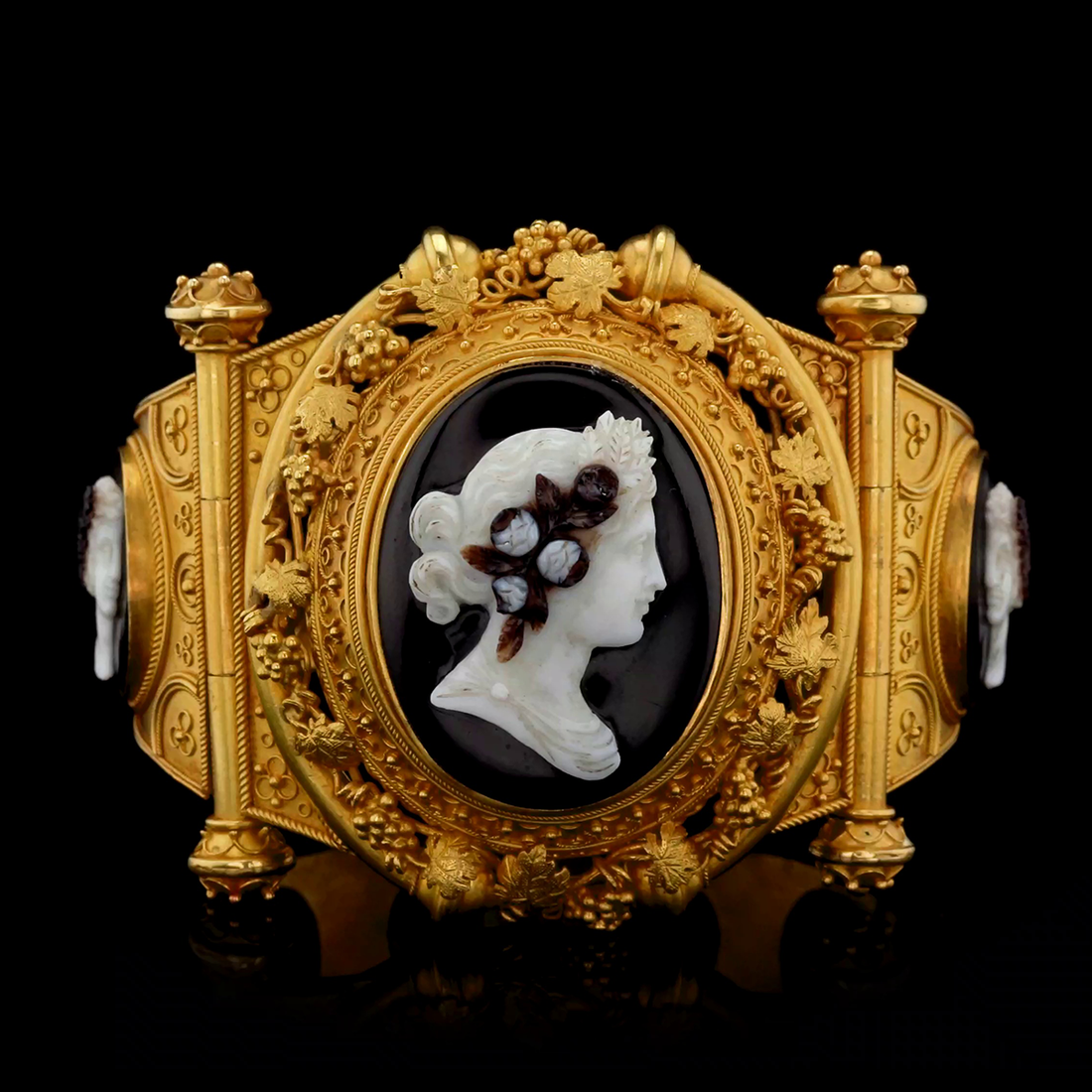During the 1800s archeology was a new science that was just getting started, growing out of the previous centuries lust for treasure hunting and antiquarianism. Important archeological discoveries were made and the world became fascinated with ancient cultures. Jewelers were intrigued by the sumptuous gold jewelry that was being found during these digs, which was much admired and desired by the fashionable set. Jewelers began creating jewels inspired by jewelry from ancient cultures, which became known as archeological revival movements and one of the most important was the Etruscan Revival during the Victorian era, which was inspired by finds in Italy from the Etruscan civilization.
Etruscan Society

The Etruscans were a wealthy society with refined tastes and a high-level of art and architecture. The Etruscans dwelled in the Tuscany area of Italy, sometime between the 8th and 2nd century BCE (dates vary according to different historians).
In Etruscan culture ritual was very important and one of their rites was to bury the dead with all of their belongings. It was a boon for archeologists who found a tremendous amount of elaborate jewelry. Victorians loved history and they were spellbound by the new science of archaeology and the lavish jewels that were coming out of the digs. Wealthy Victorians began commissioning jewelers to make replicas of the jewelry that was being found.
Etruscan Gold Work
Etruscan jewelry was highly detailed and ornamental. Certain techniques characterized their jewelry. There were four that were particularly significant. Granulation, which is a technique where teeny gold spheres are attached to a plain gold surface to create a pattern, or frame, on a piece of jewelry. Filigree metalwork, which was created by twisting fine gold wire into a pattern on the surface of a piece of jewelry was also used freely.
Color was important to Etruscan jewelry which used colored gemstones, including sapphire, emerald and garnet. Faience, colored ceramic objects were also used. Enamel was also sometimes used to add color to revival jewelry.
In Etruscan revival style jewelry, gold had a matte finish. It was created by using a procedure called “blooming”. Gold jewelry was bathed in acid, burning off the alloy metals from the surface of the piece, leaving a thin gold outer layer that had a “bloom”, or soft matte sheen.
Castellani Revives Etruscan Jewelry
Fortunato Pio Castellani, a renowned 19th century Italian goldsmith, was a leader in the Etruscan revival jewelry movement. He is credited with revitalizing the techniques used in Etruscan jewelry making. Allegedly Castellani became interested in Etruscan jewelry after attending a lecture on ancient jewelry styles in 1826. He began making revival style jewelry in the 1830s. By 1836 he had become so prominent in the field that he was invited to view the jewelry from newly discovered Etruscan tombs.
Etruscan jewelry used very intricate goldwork that was challenging to recreate. While Castellani was trying to figure out how to recreate the goldwork, he fortuitously came across a group of artisans in an Apennine mountain town who knew about ancient jewelry making techniques because they had been passed down from generation to generation. Castellani hired them to train the artisans in his workshop. Castellani became very famous for his Etruscan style jewelry, so much so that tourists visiting Rome stopped by his workshop to see his remarkable gold creations. The fashion for Etruscan revival jewelry reached its peak of popularity in the late 1850s, before going out of style in the middle of the 1880s.
The exacting and very time consuming gold work in Etruscan Revival jewelry is something that we don’t see now because it would be too expensive to recreate today. These antique pieces highlight the goldsmith’s art perfectly in jewels that are still chic and wearable today. These very special jewels not only give us a peek into the Victorian era and its culture, but also the ancient world of jewelry making.
Top of Page: Sardonyx cameo and 18-karat gold, Victorian Etruscan Revival bracelet, circa 1870.
Enamel and 20-karat gold Victorian Etruscan Revival brooch, by John Brogden; Etruscan Revival earrings, 14-karat gold, French, circa 1880; Banded agate and 18-karat gold Victorian Etruscan Revival bracelet, circa 1880.
Authored by Amber Michelle



